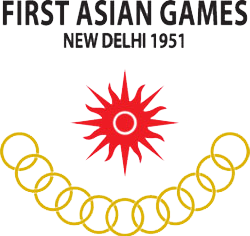
The 1954 Asian Games, officially known as the Second Asian Games – Manila 1954 was a multi-sport event held in Manila, Philippines from May 1 to 9, 1954. A total of 970 athletes from 19 Asian National Olympic Committees (NOCs) competed in 76 events from eight sports. The number of participating NOCs and athletes were larger than the previous Asian Games held in New Delhi in 1951. This edition of the games has a different twist where it did not implement a medal tally system to determine the overall champion but a pointing system. The pointing system is a complex system where each athlete were given points according to their achievement like position in athletics or in swimming. In the end the pointing system showed to be worthless as it simply ranked the nations the same way in the medal tally system. The pointing system was not implemented in future games ever since. Jorge B. Vargas was the head of the Philippine Amateur Athletic Federation and the Manila Asian Games Organizing Committee. With the second-place finish of the Philippines, only around 9,000 spectators attended the closing ceremony at the Rizal Memorial Stadium. The events were broadcast on radio live at DZRH and DZAQ-TV ABS-3 on delayed telecast.

The 2002 Asian Games, also known as the XIV Asiad, were an international multi-sport event held in Busan, South Korea from September 29 to October 14, 2002 with the football event commenced 2 days before the opening ceremony.
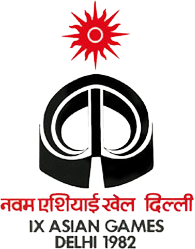
The 9th Asian Games were held from November 19, 1982 to December 4, 1982, in Delhi, India. 74 Asian and Asian Games records were broken at the event. This was also the first Asiad to be held under the aegis of the Olympic Council of Asia. Delhi joined Bangkok as the only cities to host multiple editions of the Asian Games up to this point.

Japan participated in the 1951 Asian Games held in the capital city of New Delhi, India. This country was ranked 1st with 24 gold medals, 21 silver medals and 15 bronze medals with a total of 60 medals to secure its top spot in the medal tally.

India participated and hosted the 1951 Asian Games held in the capital city, New Delhi from 4 to 11 March 1951. India was ranked second with 15 gold medals in this edition of the Asiad. Sachin Nag won a gold in swimming in this edition.

Singapore participated in the 1951 Asian Games, which was held in the capital city of New Delhi, India from 4 March 1951 to 11 March 1951. This country is ranked 4th with 4 gold medals in this edition of the Asiad.
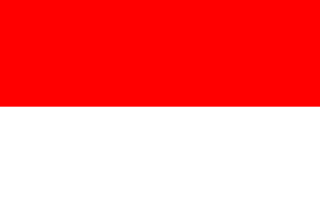
Indonesia participated in the 1951 Asian Games held in the city of New Delhi, India from 4 to 11 March 1951.

Burma, now known as Myanmar, participated in the 1951 Asian Games held in the city of New Delhi, India from 4 March 1951 to 11 March 1951. This country is ranked 8th with 3 bronze medals in this edition of the Asiad.
The Asian Games Federation (AGF) was the governing body of sports in Asia from 1949 to 1982. The federation was disbanded on 16 November 1982 in New Delhi and succeeded by the Olympic Council of Asia. The AGF was responsible for the organisation of the Asian Games from 1951 to 1982. The Federation was established on 13 February 1949, in a meeting held in Patiala House in New Delhi.
Football at the 1951 Asian Games was held in New Delhi, India from 5 to 11 March 1951. In this tournament, six teams played in the men's competition. The games lasted only 60 minutes.
Water polo was played at the 1951 Asian Games in New Delhi on 11 March 1951. Two nations entered the water polo event - India and Singapore. The host nation India won the gold medal after beating Singapore 6–4.
Swimming was contested at the 1951 Asian Games in National Stadium Swimming Pool, New Delhi, India from March 5 to March 7, 1951 with eight events all for men.

India is a member of the South Asian Zone of the Olympic Council of Asia (OCA), and has participated in the Asian Games since their inception in 1951. The Indian Olympic Association, established in 1927, and recognised in the same year by the International Olympic Committee, is the National Olympic Committee for India.

Pakistan is a member of the South Asian Zone of the Olympic Council of Asia (OCA), has participated in the Asian Games since their second edition in 1954. The Pakistan Olympic Association, established in 1948, and recognised in the same year by the International Olympic Committee, is the National Olympic Committee for Pakistan.
Diving was contested from March 10 to March 11 at the 1951 Asian Games in National Stadium Swimming Pool, New Delhi, India. Only two countries entered the competition. The host nation India won both gold medals, Iran finished second in medal table by winning one silver and one bronze.
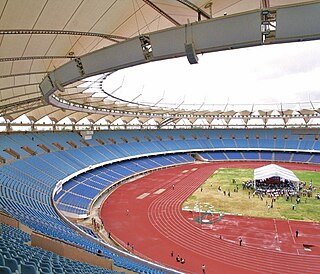
The 1982 Asian Games was a multi-sport event held in Delhi, India, from 12 November to 4 December 1982. A total of 3,411 athletes from 33 National Olympic Committees (NOCs) participated in these games, competing in 147 events in 21 sports and 22 disciplines. The number of participating countries was the greatest in Asian Games history. Handball, equestrian, rowing and golf were included for the first time; fencing and bowling were excluded. This medal table ranks the participating NOCs by the number of gold medals won by their athletes.
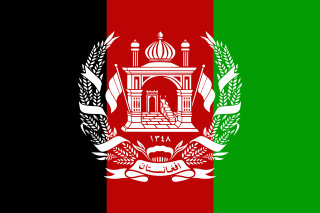
Afghanistan, participated in the 1951 Asian Games held in the city of New Delhi, India from 4 to 11 March 1951. Athletes from Afghanistan failed to secure any medal spot in these Games.

The 2016 South Asian Games, officially the XII South Asian Games, is a major multi-sport event which took place from 5 February to 16 February 2016 in Guwahati and Shillong, India. A total of 2,672 athletes competed in 226 events over 22 sports. Indian Prime Minister Narendra Modi inaugurated the 2016 South Asian Games in Guwahati on 5 February 2016. The sporting giant of the region, India continued its dominance in the game's medal tally with a staggering 308 medals including 188 gold medals.
The 2017 in Indian sports was held across the Indian cities all through the season.


